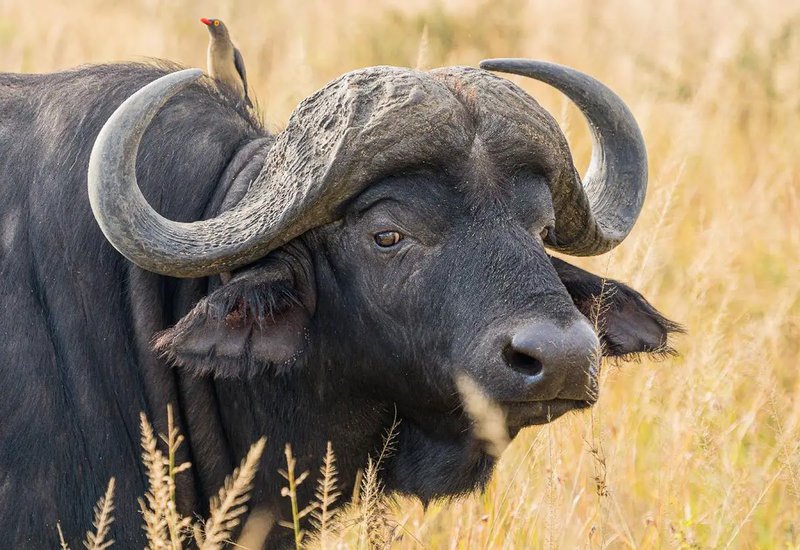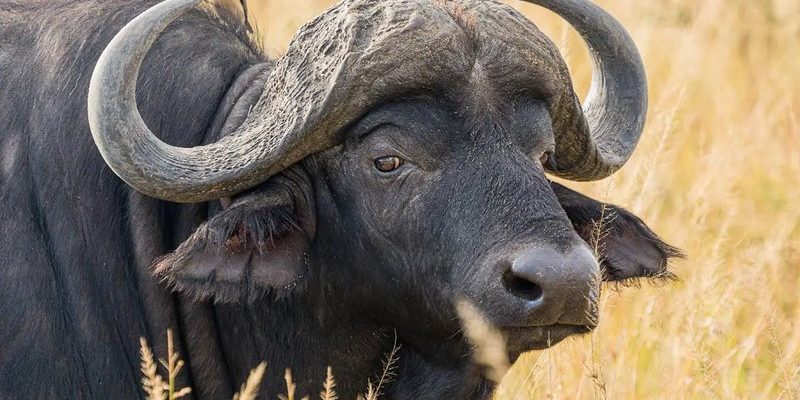
Here’s the thing: the African buffalo is more than just a part of the landscape. It’s a fascinating animal with behaviors and characteristics that spark curiosity. Whether you’re a wildlife enthusiast, a student, or just someone wanting to know more about nature, learning these interesting facts can deepen your appreciation for this majestic creature. So, let’s dive in and explore some truly captivating aspects of the African buffalo!
1. A Unique Social Structure
African buffalo are known for their strong herd mentality, which is truly remarkable. They typically live in groups called herds, which can range from a small family unit of just a few animals to large groups of hundreds. You might be wondering why they stick together so closely. The answer is simple: safety in numbers. By banding together, they can fend off predators like lions and hyenas.
The herd is usually led by a dominant female, which is a bit different from many other animal species where males take charge. This matriarchal structure helps ensure the herd remains cohesive and nurtures the young, passing down knowledge about migration routes and feeding grounds. It’s almost like having a built-in GPS system, guiding younger buffalo as they navigate their vast habitats.
2. The Black Death: A Nickname With a Story
You might be surprised to learn that the African buffalo is often referred to as the “Black Death.” Now, before you start picturing something sinister, let me explain. This nickname comes from their formidable presence and the danger they pose when threatened. It’s a testament to their unpredictable nature when cornered. Unlike many animals that flee, buffalo can be incredibly aggressive if they feel their herd is at risk.
In fact, they are responsible for more deaths in Africa than any other animal—moreso than lions! This is because their sheer size and strength can be overwhelming. Imagine being charged at by a half-ton beast with sharp horns. It’s enough to make anyone rethink their approach to wildlife encounters.
3. Impressive Adaptations for Survival
African buffalo have developed some fascinating adaptations that help them thrive in diverse environments. For starters, they possess remarkable stamina, allowing them to travel long distances in search of food and water. Think about it: they can roam the plains for hours without tiring, something most animals could only dream of.
Another unique feature is their thick skin, which serves as protection against thorns and insect bites. Buffalo often wallow in mud to keep cool and shield themselves from pesky bugs, kind of like a natural spa day! This behavior not only helps them regulate body temperature but also contributes to the health of their skin.
4. An Essential Part of the Ecosystem
You might not realize it, but African buffalo play a crucial role in their ecosystems. As herbivores, they graze on grasses, which helps maintain the savannah’s balance. By eating certain plants, they promote the growth of others, creating a healthier environment for numerous species.
Moreover, their dung is rich in nutrients, providing a feast for insects and helping fertilize the soil. Think of them as nature’s little gardeners, tending to the land while they go about their daily lives. Without buffalo, the landscape would be quite different, potentially leading to overgrowth of certain plant species and affecting other wildlife.
5. Complex Communication Methods
African buffalo have a sophisticated way of communicating with one another. They use a variety of vocalizations, body language, and even subtle ear movements. For instance, a low grunt might signal discomfort, while a snort could mean “let’s move!” It’s fascinating to think about how animals convey such complex messages without words.
Interestingly, they also communicate through their facial expressions, which can show aggression or submission. When observing a herd, you may notice a range of interactions that seem almost social—like a community gathering where everyone is aware of each other’s moods and actions.
6. Long-Lasting Bonds and Loyalty
Among African buffalo, bonding between individuals is profound. Mothers and calves share a particularly strong relationship, often staying close together until the calf matures. This protective instinct is crucial; in the wild, a young buffalo’s survival often hinges on its mother’s vigilance.
Buffalo are also known to display loyalty to one another, often returning to help a wounded herd member. This camaraderie is something that we see in very few animal species, showcasing the social and emotional complexity of these creatures. It’s heartwarming to see how they support each other, much like a strong family unit.
7. Adaptations to Different Environments
African buffalo are highly adaptable creatures, able to thrive in various habitats across the continent, from grasslands to forests. This flexibility is part of what makes them so successful as a species. Interestingly, there are different subspecies of African buffalo, each adapted to their unique environment.
For example, the Cape buffalo prefers open savannahs and is known for its large, curved horns. In contrast, the forest buffalo is smaller and typically found in denser woodlands. This adaptability gives buffalo a leg up in their struggle for survival, allowing them to inhabit areas where food and water may be scarce.
8. A Strong Sense of Smell
One of the lesser-known facts about African buffalo is their exceptional sense of smell. They can detect water sources from miles away, which is crucial during dry seasons. Imagine having the ability to sniff out a refreshing drink from afar! This sense helps them navigate their environment efficiently, ensuring they find the resources they need to survive.
Their keen olfactory skills also play a role in social interactions. Buffalo can recognize each other and gauge the emotions of their herd members through scent, which adds another layer to their complex social structure. It’s like having an invisible social network that connects them!
9. Threats from Humans and Conservation Efforts
Unfortunately, African buffalo face significant threats from habitat loss, poaching, and disease. As human populations expand, these majestic creatures are losing their natural habitats, putting pressure on their populations. Additionally, buffalo are susceptible to diseases like bovine tuberculosis, which can have devastating effects on their numbers.
Conservation efforts are in place to protect African buffalo, including national parks and wildlife reserves. These areas provide safe havens where buffalo can roam freely, away from the dangers of poaching and encroachment. Supporting conservation can be as simple as spreading awareness and participating in eco-friendly tourism, ensuring that future generations can appreciate these incredible animals.
10. The African Buffalo’s Cultural Significance
Finally, the African buffalo holds cultural significance in many African communities. Various tribes and cultures regard them as symbols of strength, courage, and endurance. In some areas, the buffalo is celebrated in art and storytelling, embodying the spirit of the wild.
Additionally, hunting buffalo traditionally played an important role in some communities, providing food and resources. However, with changing attitudes towards wildlife and conservation, many now focus on preserving these animals. It’s fascinating how the perception of the African buffalo has evolved over time, reflecting the balance between cultural heritage and modern conservation efforts.
—
In summary, the African buffalo is much more than meets the eye. From their social structures to their essential roles in ecosystems, each fact unveils a piece of their fascinating existence. Understanding these creatures not only enriches our knowledge but also highlights the importance of safeguarding their future. So, the next time you think about African wildlife, remember the resilient buffalo and all the incredible traits that make them a vital part of the natural world.

